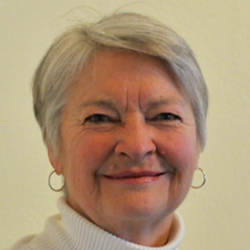
Computer scientists who take the Singlularity seriously should explain how it could come about in a computer. Few commentators extend their prediction of a Singularity to actual "want" in a computer, Omohundro [Omohundro] a rare exception. Many criticisms of the prediction of the Singularity, especially as expressed by Kurzweil [Kurzweil], have challenged his attribution of impetus to accelerating technological advancement, and the Wikipedia article [Singularity] concentrates on that aspect. Many who agree with Kurzweil's prediction imply that somehow, a computer can want something. To say that an AI agent might "go rogue" [Fitzgerald] could mean that it turns against humanity… or it could mean that it develops some undesirable output activity that was not anticipated by its programmers. Those are quite different threats, but the claims are sometimes conflated. Nick Bostrom, under a careful reading, assumes that the possession of a goal amounts to volition [Bostrom, Ch. 7 and 9]. But how did it get there? Goals are, of course, programmed in advance; while there is plenty of risk in that scenario [Amodei], it's not the issue here.
Explanation by rapidly advancing technology is not enough to shape clear volition. Tech advances in other machines do not lead to acts of will; even the large hadron collider does not seem poised to take over world. When you discover that your printer is printing blank page after blank page, you don't raise the alarm that the line printer daemon is driven to consume all available resources. Alpha Go does not "want" to win (although people say exactly that). A neural network does not "want" to learn what a zebra looks like; the code simply adds or subtracts from the values of the weights based on some numeric comparison. Because our articulation is impoverished, forcing reliance on anthropomorphic language [Hill2018], this sounds to us like exercises of will. They are, rather, manifestations of will, which had to precede them.
How would volition look, in a computer (under the Church-Turing thesis)? No matter whether the desire or want comes directly from code or from complex processing or from malificent programming, what are the pertinent questions to ask about the actual implementation of V, a willful notion, desire, or want? We can, as computer scientists happily do, render the action part formally, in various ways—for instance, primitives like INTEND, GOAL, PLAN, or DESIRE as functions or predicates, or Will-to(), or Wants(A,P), intended by the programmer to mean that some artificial agent A wants that some propositional state of affairs P holds. But these are ad hoc formulations; we wish to generate, not to assume, those derivative objects. Such math logic formalizations can be broadly lumped together as primitive operator, modal operator or predicate. An operator makes (some kind of thing) V into a goal, and a predicate asserts that (some kind of thing) V is a goal. But…
What we want is V itself. How did it get there? Let's make the obvious move, and define an act of volition V as that which yields a goal, without specifying whether V is like a parameter to something or like a function on something. It's not the structure, or type, or specification of V that's in question; it's the existence. Could it be an emergent property in a Turing Machine? We reject that: Emergent properties are projected from the outside by us. We're curious whether a computer itself can really want something.
Consider a Turing Machine, made up of the usual:
⟨ Symbols S (with a blank)
States Q (with a start-state)
A function T (transitions) from { state × symbol } to {{ state × symbol } ∪ { L, R}} ⟩
Are there any TM-compatible conceptions of a goal? Yes, many. See the Logic of Action entry in the Stanford Encyclopedia of Philosophy [SEP-LA, Section 4]. Are there any that show where such a goal comes from, that show us what a V looks like, such that it yields a goal? No, none. Where would it appear — in the quadruple or on the tape, algorithm or data? Is a volition a state?—No, if it's data, that begs the question, and if it's a state, we still need to ask what gives rise to it such that it is included in Q—which also applies to the tranistions in T. Could V be a mutation, a random bit flip? That violates the very idea of volition, which is deliberate.
Or is it dynamic? Turing Machines can construct their own programs by writing on the tape, of course; presumably, that's how a formalization of a goal would be programmed. We can take a cue from Schroeder [Analysis of Anscombe, SEP-Desire]: "Beliefs are like declarative sentences, which are satisfied (made true) by whether the world as it is conforms to them, but desires are like imperative sentences, which are satisfied (fulfilled) by changes in the world bringing the world into conformity with them." We know how to set up or render beliefs (as forumlae), but how would we render a desire? Bringing the world into conformity requires execution. On my own view [Hill2016], algorithms are imperative abstractions, while Turing Machines (their implementations) are declarative abstractions. (Turing Machines define, but not do not perform, actions.) Well, then, could a volition be an executing process? If so, it is not a TM.
None of this quite captures the crux of the matter. We computer scientists would like an answer in terms that, while not Turing-computable, are Turing-compatible: How does a TM fail to hold volition? Can we isolate the character of wanting that eludes computation?
References
[Amodei] Concrete problems in AI safety. 2016. Dario Amodei, Chris Olah, Jacob Steinhardt, Paul Christiano, John Schulman, and Dan Mané. arXiv preprint arXiv:1606.06565.
[Bostrom] Nick Bostrom. 2014. Superintelligence.
[Fitzgerald] Kris Fitzgerald. 2018. Can We Keep AI From Going Rogue? Forbes.
[Hill2016] Robin K. 2016. "What an Algorithm Is", Philosophy & Technology 29:1.
[Hill2018] Robin K. Hill. 2018. Articulation of Decision Responsibility. Blog@CACM. May 21, 2018.
[Kurzweil] Ray Kurzweil. 2005. The Singularity is Here. Penguin US.
[Omohundro] Stephen M. Omohundro. 2018. The Basic AI Drives. In Artificial Intelligence Safety and Security. Chapman and Hall/CRC.
[SEP-Desire] Tim Schroeder. 2020. Desire. The Stanford Encyclopedia of Philosophy (Summer 2020 Edition), Edward N. Zalta (ed.).
[SEP-LA] Krister Segerberg, John-Jules Meyer, and Marcus Kracht. The Logic of Action. The Stanford Encyclopedia of Philosophy (Summer 2020 Edition), Edward N. Zalta (ed.).
[Singlularity] Wikipedia contributors. (2022, May 14). Technological singularity. In Wikipedia, The Free Encyclopedia. Retrieved May 27, 2022.
Robin K. Hill is a lecturer in the Department of Computer Science and an affiliate of both the Department of Philosophy and Religious Studies and the Wyoming Institute for Humanities Research at the University of Wyoming. She has been a member of ACM since 1978.



Join the Discussion (0)
Become a Member or Sign In to Post a Comment